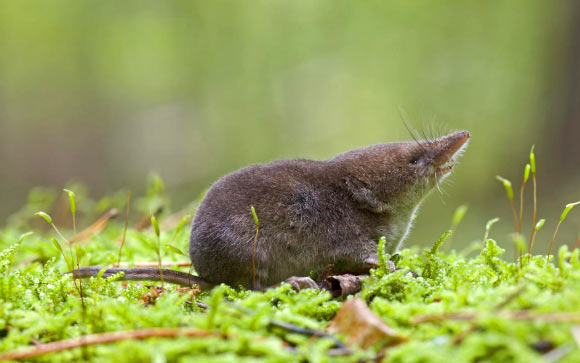According to a study led by Dr. Javier Lazaro of the Max Planck Institute for Ornithology, the skulls of Eurasian shrews (Sorex araneus) shrink in anticipation of winter, by an average of 15.3%; as spring approaches, their skulls grow again to approach their previous size. The study appears in the journal Current Biology.
“We found that each shrew undergoes a dramatic decrease in braincase size from summer to winter. Then, in spring, the braincase regrows, almost reaching the original size in the second summer,” Dr. Lazaro said.
Earlier studies had suggested that the heads of these shrews might shrink seasonally.
At the population level, the height of the braincase of shrews was shown to decline by 20% and then to increase again by 15%.
There’s even a name for it based on the first person to report the general observation: the Dehnel phenomenon.
But the new study is the first to fully document the shrews’ shrunken heads by following individual animals over the course of the seasons.
Dr. Lazaro and colleagues followed the intra-individual change in skull size and body mass throughout the full cycle in wild recaptured shrews.
“Using X-ray images, we showed that individuals decreased the size of their braincases in anticipation of winter by an average of 15.3%. Braincases then partially regrew in spring by 9.3%,” they said.
“Body mass decreased by 17.6% and then dramatically increased by 83.4% in spring.”
“Thus, we demonstrate that the dramatic changes incurred by Dehnel’s phenomenon occur in the individual’s bone and other tissues.”
The researchers said that at the moment, they “know very little regarding the causes.”
The reduction in size affects not only the skull, but also the shrews’ entire body: in winter, several major organs lose mass, the spine gets shorter, and even the brain mass decreases. Shrews have high metabolisms, and it’s likely that the decline in size helps them to live through times of food scarcity. Unlike other animals, shrews don’t migrate or hibernate for the winter.
“Reducing head size — and thus brain size — might save energy disproportionally as the brain is energetically so expensive,” Dr. Lazaro said.
“How can a skull actually shrink? The process isn’t fully understood, but there’s evidence suggesting that the braincase shrinks as tissue within cranial sutures is resorbed. As spring approaches, the bone tissue regenerates.”
The authors plan to further investigate structural change in the brain as the shrews’ heads shrink. They are also curious to know how this process affects the animals’ cognitive abilities.
_____
Javier Lázaro et al. 2017. Profound reversible seasonal changes of individual skull size in a mammal. Current Biology 27 (20): R1106-R1107; doi: 10.1016/j.cub.2017.08.055








